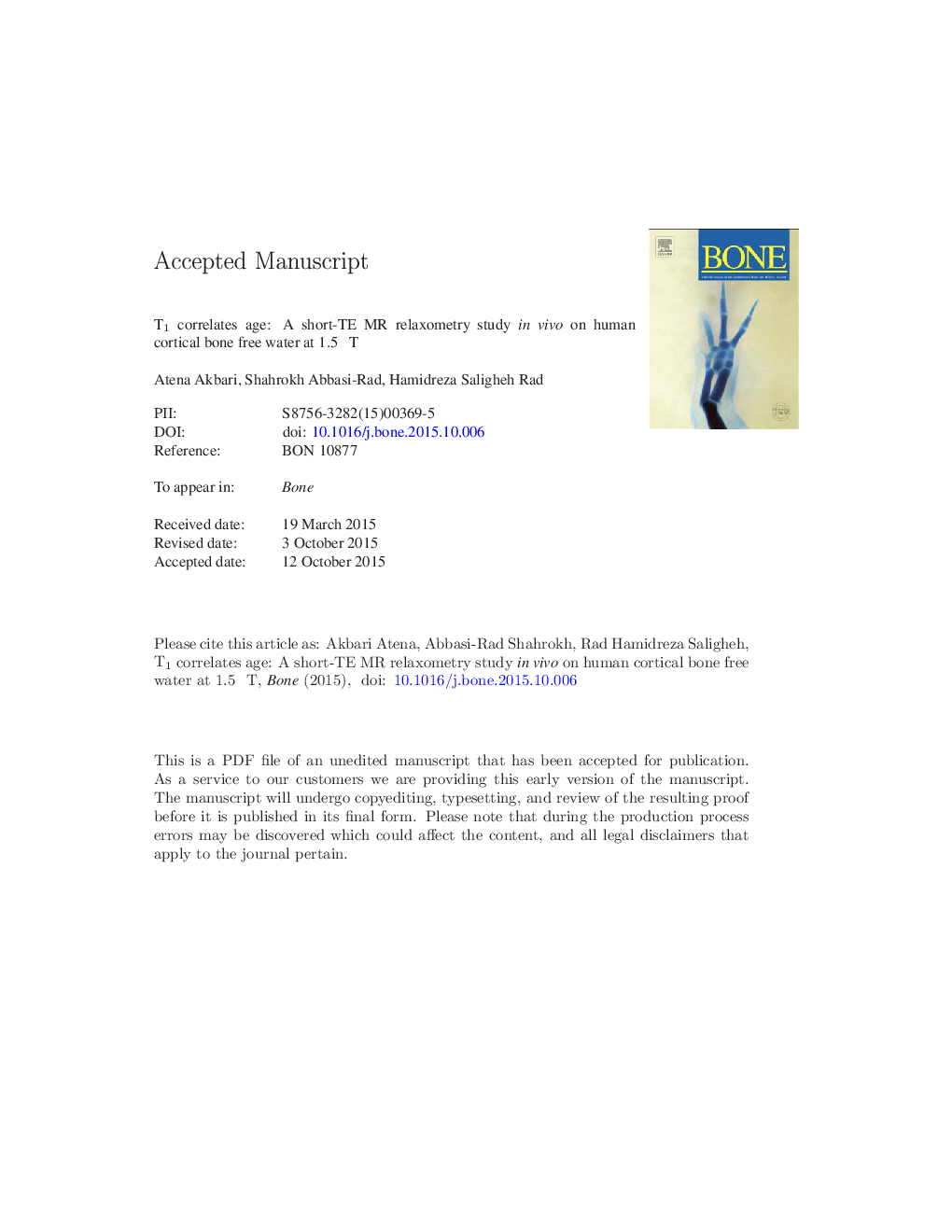| Article ID | Journal | Published Year | Pages | File Type |
|---|---|---|---|---|
| 5889112 | Bone | 2016 | 17 Pages |
Abstract
Large pores of human cortical bone (> 30 μm) are filled with fluids, essentially consisting of water, suggesting that cortical bone free water can be considered as a reliable surrogate measure of cortical bone porosity and hence quality. Signal from such pores can be reliably captured using Short Echo Time (STE) pulse sequence with echo-time in the range of 1-1.5 msec (which should be judiciously selected correspond to T2â value of free water molecules). Furthermore, it is well-known that cortical bone T1-relaxivity is a function of its geometry, suggesting that cortical bone free water increases with age. In this work, we quantified cortical bone free water longitudinal relaxation time (T1) by a Dual-TR technique using STE pulse sequence. In the sequel, we investigated relationship between STE-derived cortical bone free water T1-values and age in a group of healthy volunteers (thirty subjects covering the age range of 20-70 years) at 1.5 T. Preliminary results showed that cortical bone free water T1 highly correlates with age (r2 = 0.73, p < 0.0001), representing cortical bone free water T1 as a reliable indicator of cortical bone porosity and age-related deterioration. It can be concluded that STE-MRI can be utilized as proper alternative in quantifying cortical bone porosity parameters in-vivo, with the advantages of widespread clinical availability and being cost-effective.
Keywords
Related Topics
Life Sciences
Biochemistry, Genetics and Molecular Biology
Developmental Biology
Authors
Atena Akbari, Shahrokh Abbasi-Rad, Hamidreza Saligheh Rad,
